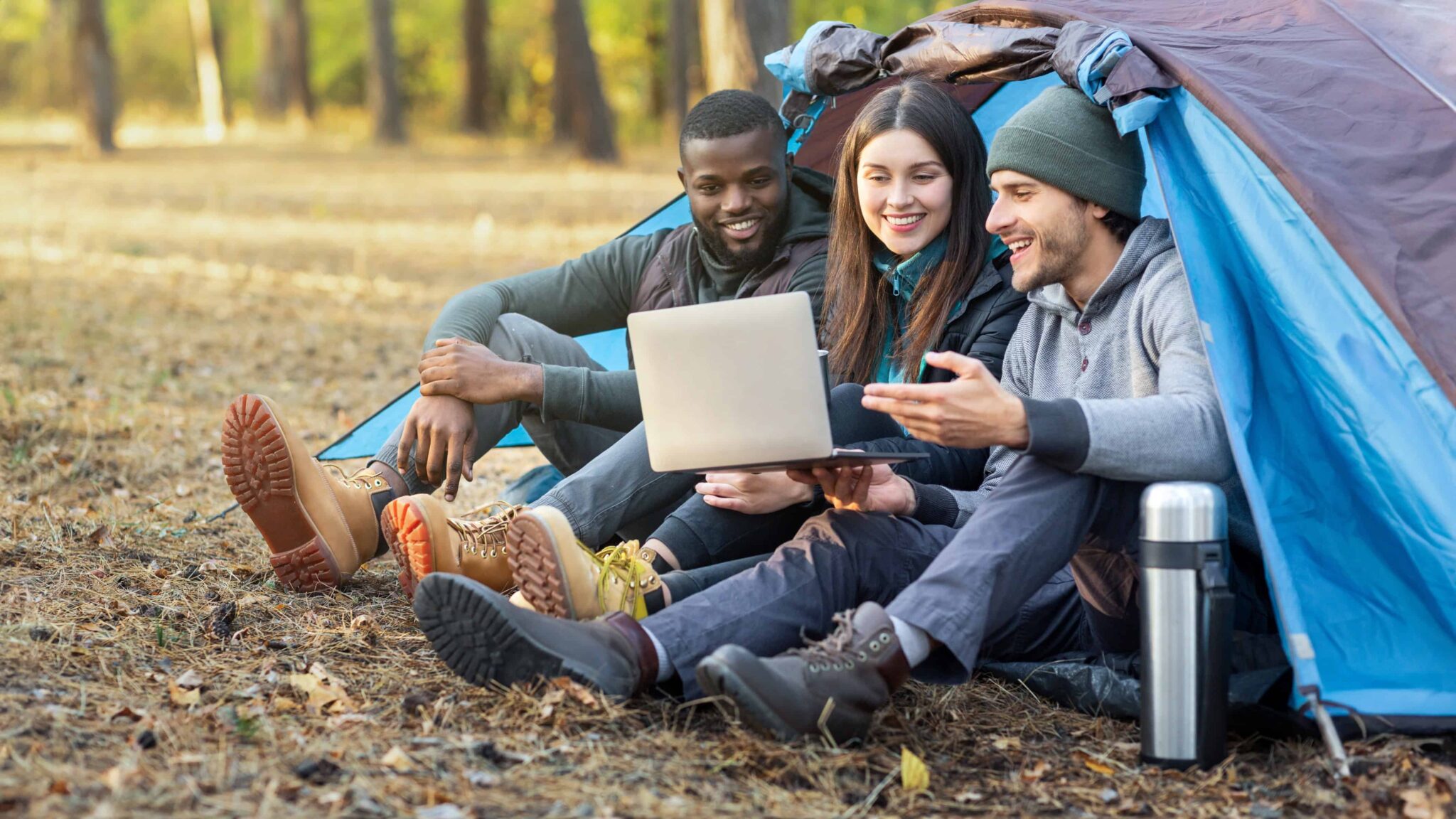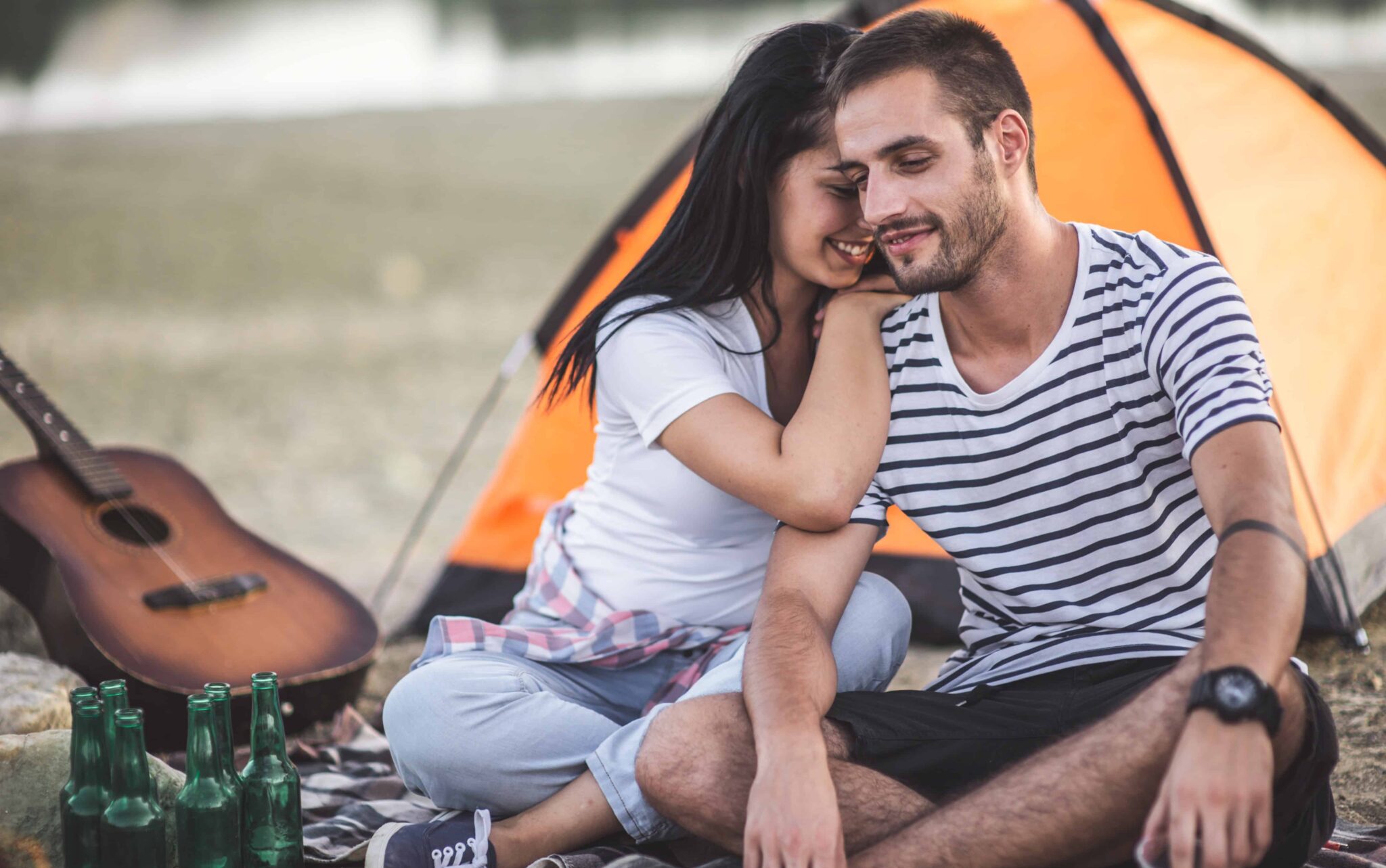Planning a camping trip can be both exciting and a bit overwhelming, especially if it’s your first time venturing into the great outdoors. How do you make sure you’ve got everything covered? From choosing the ideal campsite to packing all the essentials, there’s a lot to consider. But don’t fret—we’re here to help!
In this ultimate guide, we’ll walk you through how to plan a camping trip that’s safe, enjoyable, and memorable. So, let’s dive in and get you ready for your outdoor adventure!
Planning a Camping Trip
A successful camping trip starts with thoughtful preparation.
Here’s how to cover the basics and enjoy the great outdoors worry-free.
Choosing the Right Campsite
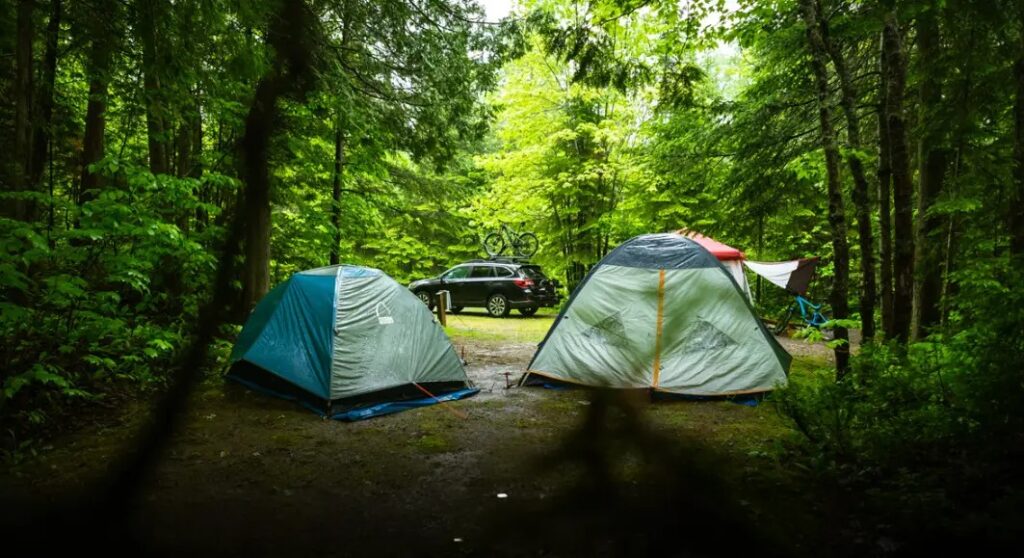
The foundation of a successful camping trip starts with selecting the perfect campsite. The location you choose can make or break your experience.
Here’s what to consider:
Types of Camping
- Frontcountry Camping: Also known as car camping, this involves driving directly to your campsite. Facilities often include restrooms, picnic tables, and fire pits.
- Backcountry Camping: For the more adventurous, this involves hiking to a remote location with no facilities—just you and nature.
- Glamping: A blend of glamour and camping, glamping offers luxury accommodations like cabins or yurts with amenities such as beds and electricity.
Factors to Consider
- Distance: Decide how far you’re willing to travel. Local campsites are great for weekend getaways, while distant destinations might require more planning.
- Scenery: Do you prefer mountains, forests, lakes, or deserts? Choose a setting that appeals to you.
- Activities: If you’re interested in specific activities like kayaking, fishing, or rock climbing, select a site that offers these options.
- Season and Weather: Check the weather conditions and seasonal considerations. Some sites are only accessible during certain times of the year.
- Reservations: Popular campgrounds can fill up fast. Make campground reservations well in advance to secure your spot.
- Permits and Regulations: Some areas require permits for camping or have restrictions on campfires and wildlife interactions.
For assistance in finding campsites, websites like ReserveAmerica can help you search and book spots nationwide.
Creating a Camping Trip Checklist
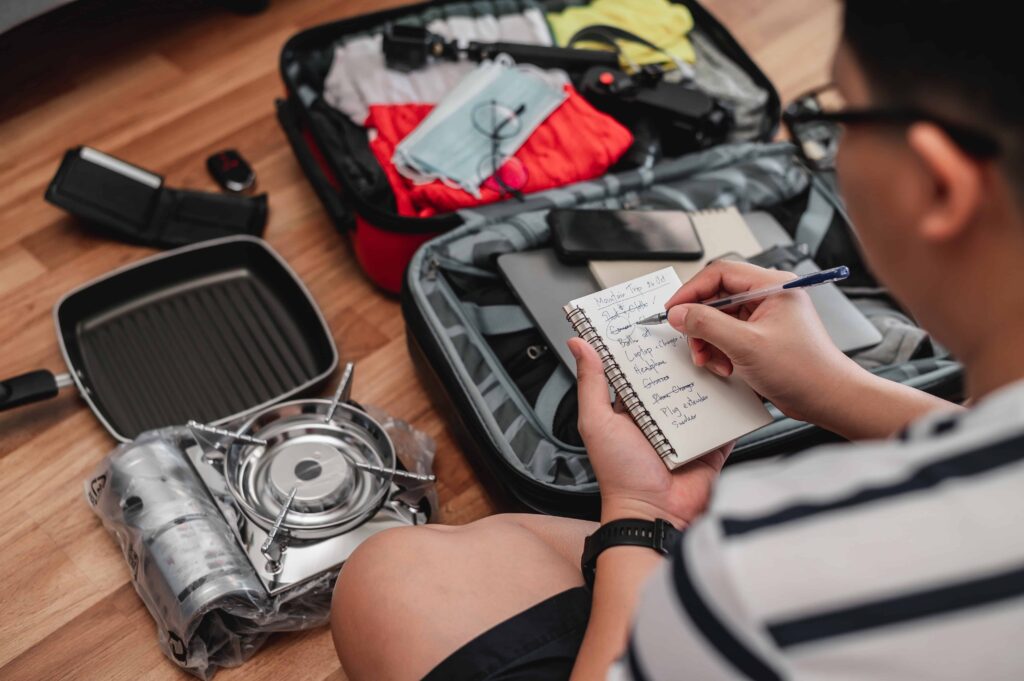
A well-thought-out checklist ensures you don’t forget any important items.
Here’s a detailed camping trip checklist to get you started:
Shelter and Sleeping
- Tent: Choose one that’s appropriate for the number of campers and weather conditions.
- Tent Footprint: A ground cloth to protect the bottom of your tent.
- Sleeping Bags: Consider the temperature rating suitable for the climate.
- Sleeping Pads or Air Mattresses: For added comfort and insulation from the ground.
- Camping Pillows: Or use a stuff sack filled with clothing.
Cooking and Dining
- Camp Stove: Opt for a portable stove with sufficient burners.
- Fuel: Ensure you have enough fuel for your stove.
- Cookware: Pots, pans, kettle, and a Dutch oven if desired.
- Utensils: Spatulas, serving spoons, knives, forks, and spoons.
- Dishes: Plates, bowls, and mugs.
- Cooler: With ice packs to keep perishables fresh.
- Water Containers: Collapsible jugs for water storage.
- Dishwashing Supplies: Biodegradable soap, scrubber, and dish towel.
- Trash Bags: For waste disposal.
Clothing and Footwear
- Base Layers: Moisture-wicking underwear and thermal tops.
- Middle Layers: Insulating layers like fleece or down jackets.
- Outer Layers: Waterproof jackets and pants.
- Footwear: Hiking boots, sandals, or water shoes.
- Accessories: Hats, gloves, and sunglasses.
Personal Items
- Toiletries: Toothbrush, toothpaste, biodegradable soap, deodorant.
- First-Aid Kit: Bandages, antiseptic wipes, pain relievers, tweezers.
- Sun Protection: Sunscreen with high SPF and lip balm.
- Insect Repellent: To ward off mosquitoes and ticks.
- Medications: Any personal prescriptions or over-the-counter needs.
- Hand Sanitizer: For quick clean-ups.
Navigation and Electronics
- Maps and Guidebooks: Physical copies in case electronic devices fail.
- Compass or GPS Device: Essential for backcountry camping.
- Headlamps and Flashlights: With extra batteries.
- Portable Charger or Power Bank: For electronic devices.
- Emergency Communication Device: Like a whistle or satellite phone.
Camp Comfort and Extras
- Camping Chairs and Tables: For added comfort.
- Hammocks: For relaxation.
- Tarps and Ropes: For additional shelter or gear storage.
- Entertainment: Books, cards, or games.
- Binoculars: For wildlife watching.
- Camera: To capture memories.
Safety and Miscellaneous
- Multi-Tool or Knife: For various tasks.
- Fire Starters: Matches, lighters, and firestarter sticks.
- Bear Canister or Food Storage Bag: In bear country, proper food storage is crucial.
- Whistle and Mirror: For signaling in emergencies.
- Duct Tape: For quick repairs.
Having a comprehensive list helps ensure you’re well-prepared for any situation. Adjust the checklist based on the specific needs of your trip.
Meal Planning and Preparation
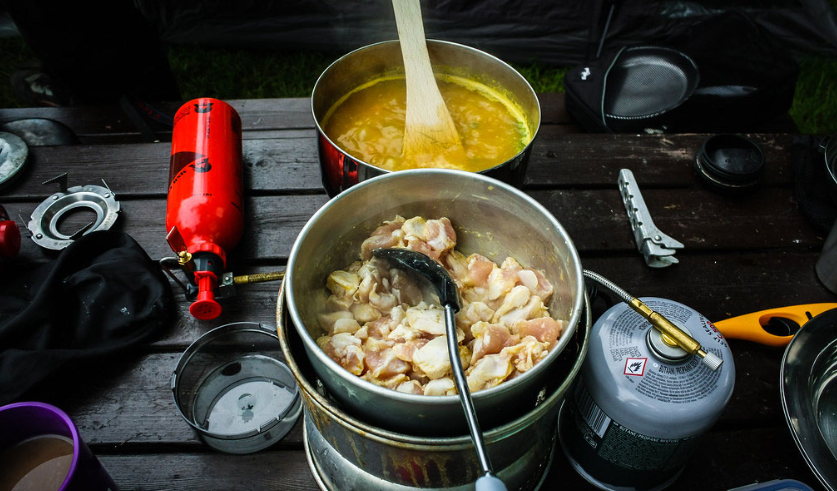
Good food makes for a great camping experience.
Here’s how to plan your meals:
Tips for Meal Planning
- Plan Ahead: Decide on meals for each day, including snacks.
- Prep at Home: Chop vegetables, marinate meats, and pre-mix pancake batter.
- Simple Recipes: Opt for meals that require few ingredients and are easy to cook over a campfire or stove.
- Storage: Use resealable bags and containers to organize ingredients.
- Portion Control: Pack the right amount to avoid waste and save space.
Sample Camping Menu
- Breakfasts:
- Pancakes with maple syrup and fresh fruit.
- Breakfast burritos with scrambled eggs, cheese, and salsa.
- Oatmeal with nuts and dried fruit.
- Lunches:
- Trail mix and energy bars during hikes.
- Sandwiches with deli meats or peanut butter and jelly.
- Pasta salad prepared ahead of time.
- Dinners:
- Grilled chicken with vegetables.
- Campfire chili with beans and ground beef.
- Foil packet meals with fish, potatoes, and veggies.
- Snacks:
- Popcorn over the campfire.
- S’mores with marshmallows, chocolate, and graham crackers.
- Fresh fruit and jerky.
Remember to store food securely to prevent attracting wildlife. In some areas, using a bear canister is mandatory.
Planning Activities
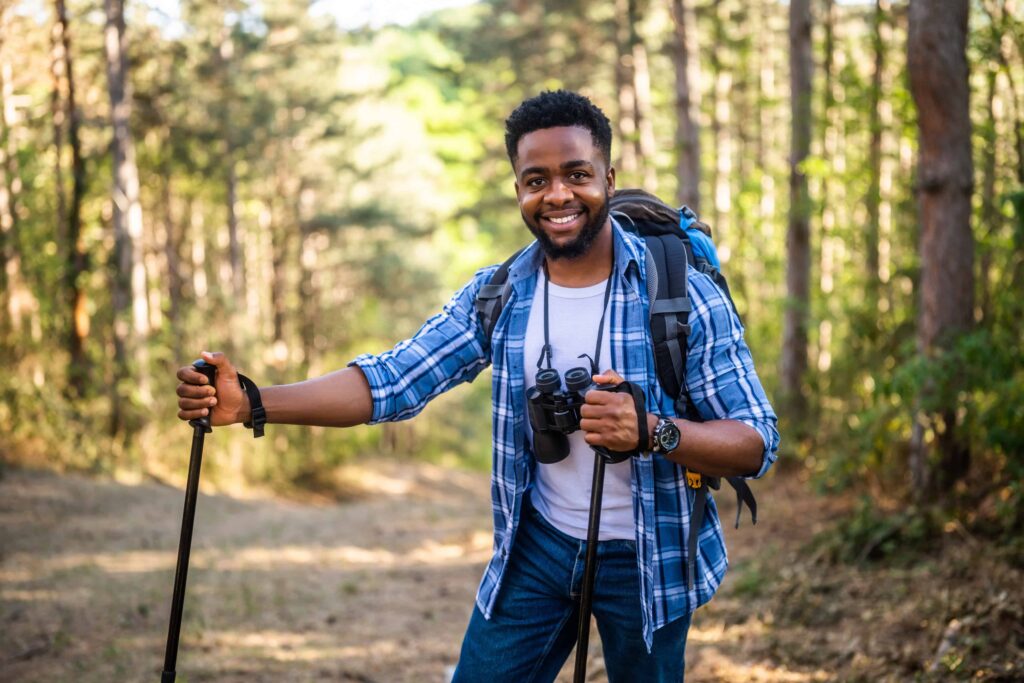
Make the most of your camping trip by planning engaging activities:
- Hiking and Nature Walks: Explore nearby trails and enjoy the scenery.
- Water Activities: Swimming, canoeing, or kayaking if near a lake or river.
- Fishing: A relaxing way to spend time; ensure you have the proper licenses.
- Wildlife Observation: Bring a field guide to identify animals and plants.
- Campfire Stories and Songs: A classic way to bond and entertain.
- Photography: Capture the beauty of nature.
- Geocaching: A treasure-hunting game using GPS coordinates.
For family camping trips, consider activities like scavenger hunts or nature crafts to keep kids engaged.
Understanding Camping Etiquette

Being a responsible camper helps preserve the environment and ensures everyone has a pleasant experience.
Leave No Trace Principles
- Plan Ahead and Prepare: Know the regulations and special concerns for the area you’ll visit.
- Travel and Camp on Durable Surfaces: Stick to established trails and campsites.
- Dispose of Waste Properly: Pack out all trash and leftover food.
- Leave What You Find: Preserve the past; leave rocks, plants, and artifacts as you find them.
- Minimize Campfire Impact: Use a lightweight stove for cooking and enjoy a candle lantern instead of a fire.
- Respect Wildlife: Observe animals from a distance; do not follow or approach them.
- Be Considerate of Other Visitors: Respect other campers and keep noise levels down.
For more details, visit the Leave No Trace Center for Outdoor Ethics.
Safety Tips and Best Practices
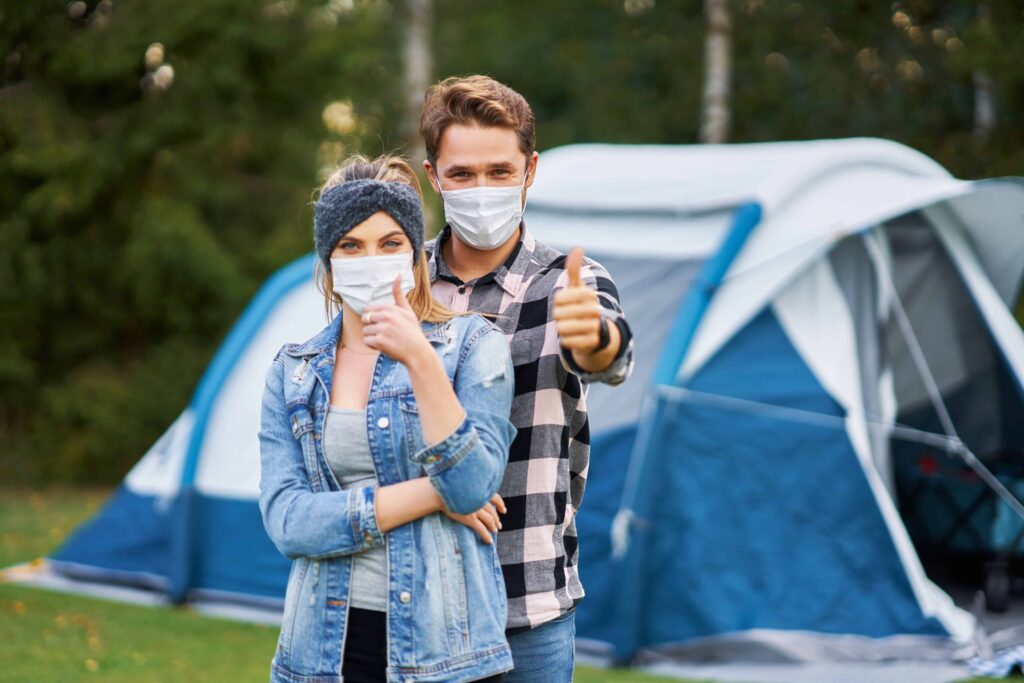
Safety should always be a top priority. Here are some additional camping safety tips:
- Weather Awareness: Keep an eye on the forecast and be prepared for sudden changes.
- Emergency Plan: Know the location of the nearest hospital and have emergency contacts readily available.
- Food Safety: Keep raw meats separate and cook foods to safe temperatures.
- Hydration: Drink plenty of water, especially during physical activities.
- Sun Protection: Wear sunscreen and protective clothing to prevent sunburn.
- Insect Protection: Use repellents and check for ticks daily.
- Allergies and Medical Conditions: Carry necessary medications and inform your group of any health concerns.
Camping with Kids and Pets
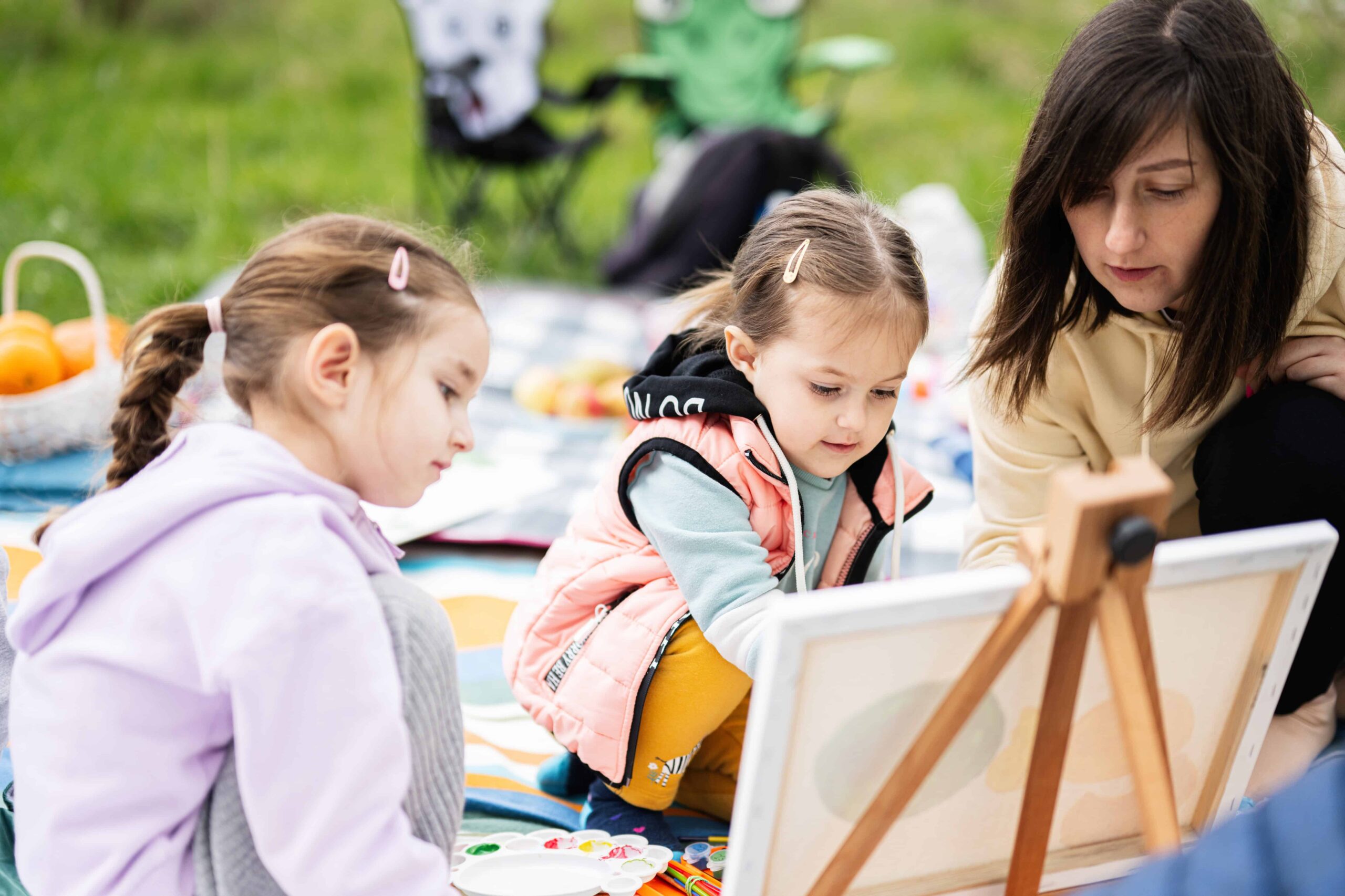
Camping is a wonderful way to bond as a family, including the four-legged members.
With Kids:
- Involve Them in Planning: Let kids help pack and choose activities.
- Education: Teach them about nature and safety rules.
- Entertainment: Bring games, books, and toys suitable for outdoor play.
- Comfort Items: Pack familiar items like a favorite blanket or stuffed animal.
With Pets:
- Pet-Friendly Campsites: Ensure the campsite allows pets.
- Pet Gear: Bring a leash, collapsible bowls, and pet food.
- Identification: Make sure pets have ID tags and consider microchipping.
- Vaccinations: Keep vaccinations up to date and carry proof if required.
Conclusion
Planning a camping trip doesn’t have to be a daunting task. With thorough preparation and the right mindset, you’ll be well on your way to enjoying the serenity and excitement that nature has to offer. Remember to respect the environment, prioritize safety, and most importantly, have fun!
So, what are you waiting for? Start planning your camping adventure today and create memories that will last a lifetime!

